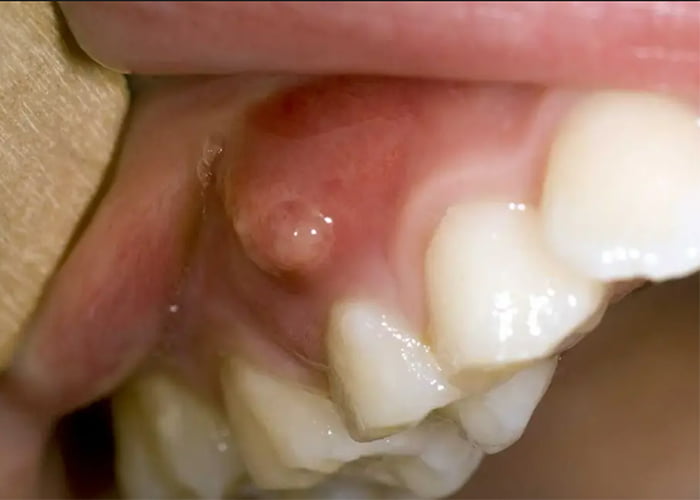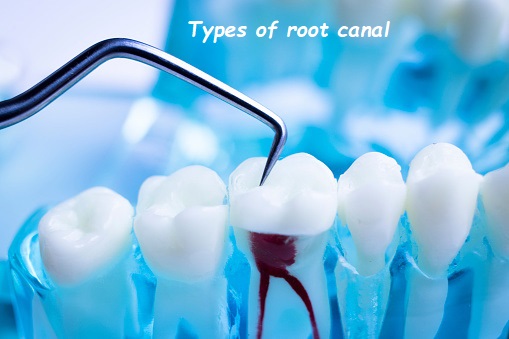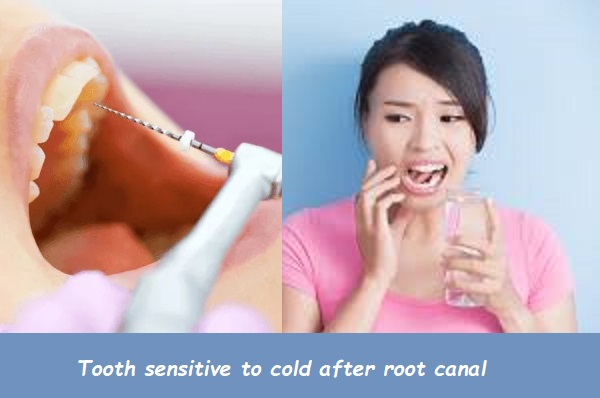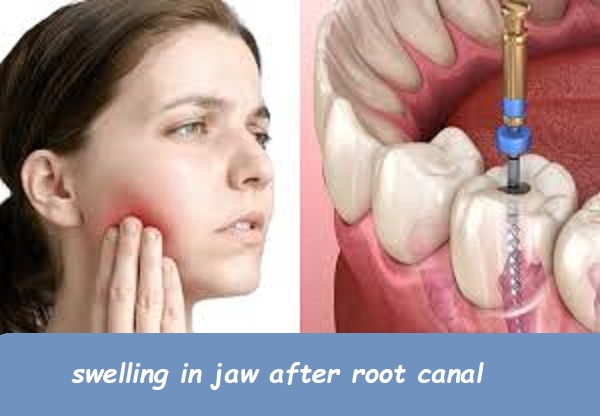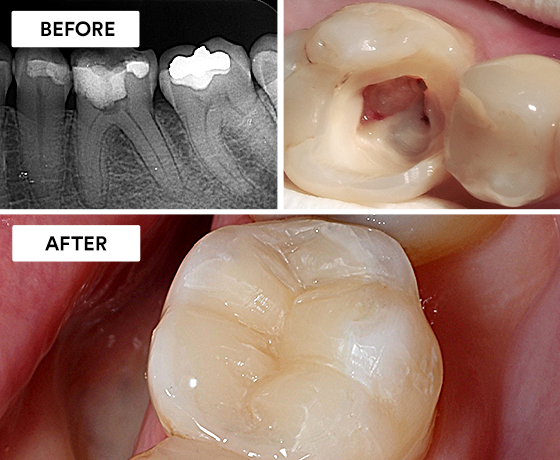Nausea after root canal
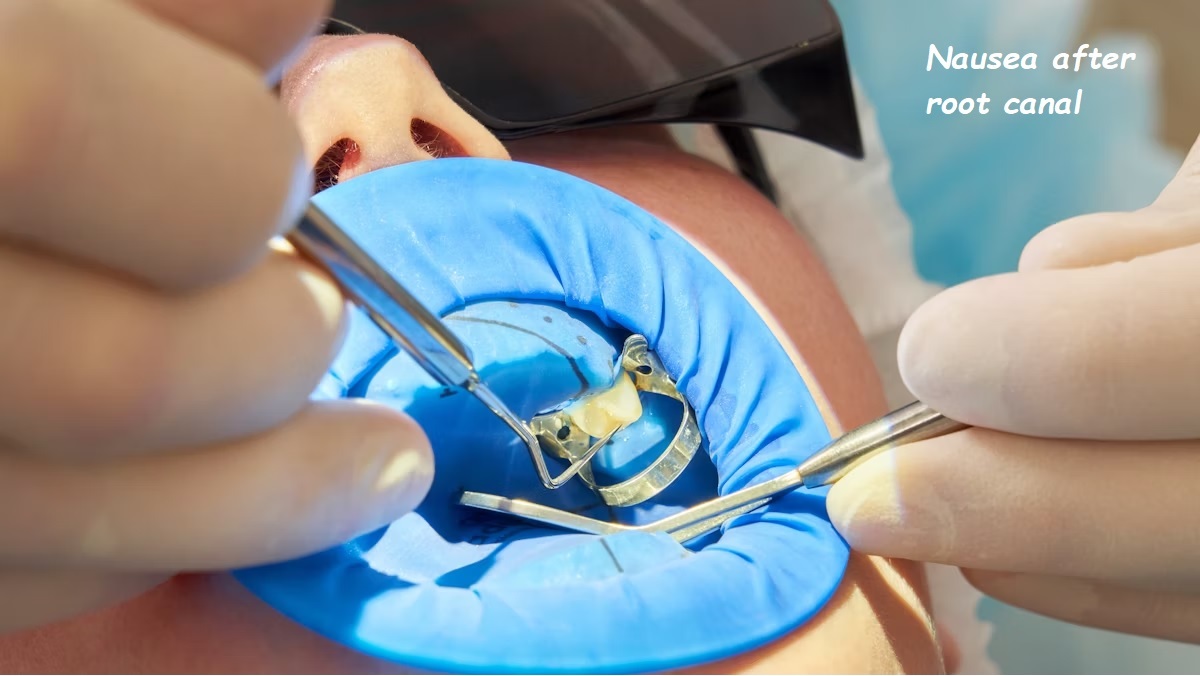
Understanding Nausea After Root Canal: Causes, Treatment, and Prevention
Root canal treatments are common dental procedures that save damaged or infected teeth. Despite their effectiveness, some patients may experience side effects, including nausea. Understanding why nausea occurs after a root canal and how to manage it can make the recovery process smoother and more comfortable. This comprehensive guide will explore the causes, treatment options, and prevention strategies for nausea after a root canal.
What is a Root Canal?
A root canal is a dental procedure performed to remove the infected or damaged pulp from inside a tooth. The pulp is the soft tissue inside the tooth that contains nerves, blood vessels, and connective tissue. When the pulp becomes infected or inflamed due to deep decay, repeated dental procedures, or cracks and chips in the tooth, a root canal is necessary to save the tooth and prevent further infection.
Causes of Nausea After Root Canal
- Anesthesia and Sedation
- Local anesthesia or sedation is commonly used during a root canal to numb the area and reduce pain. Some individuals may react to these medications, leading to nausea. Additionally, the lingering effects of sedation can cause dizziness and nausea as they wear off.
- Stress and Anxiety
- Dental procedures can be stressful and anxiety-inducing for many people. The emotional and physical stress associated with undergoing a root canal can trigger nausea in some patients.
- Medications
- Post-operative medications, including painkillers and antibiotics, can sometimes cause stomach upset and nausea. The body’s reaction to these medications can vary, leading to different levels of discomfort.
- Swallowing Blood
- There may be some bleeding in the treated area during a root canal. Swallowing blood can irritate the stomach lining and cause nausea.
- Post-Operative Infection
- Although rare, an infection can develop after a root canal, leading to symptoms such as nausea, fever, and pain. It’s important to monitor your condition and seek medical attention if you suspect an infection.
Managing Nausea After Root Canal
- Rest
- Taking time to rest and relax after your procedure can help alleviate nausea. Avoid strenuous activities and give your body time to recover.
- Hydration
- Drinking plenty of water can help flush out any residual anesthesia or medication from your system. Staying hydrated also helps prevent dehydration, which can exacerbate nausea.
- Ginger and Peppermint
- Ginger and peppermint are natural remedies known for their anti-nausea properties. Drinking ginger tea or sucking on peppermint candies can help soothe your stomach.
- Over-the-Counter Medications
- Over-the-counter anti-nausea medications, such as meclizine or dimenhydrinate, can provide relief. Be sure to consult your dentist or doctor before taking any new medications.
- Small, Frequent Meals
- Eating small, frequent meals instead of large meals can help prevent nausea. Choose bland, easy-to-digest foods such as crackers, toast, and bananas.
- Avoiding Certain Foods and Drinks
- Avoiding spicy, greasy, or heavy foods, as well as alcohol and caffeine, can help reduce nausea. Stick to a light diet until your nausea subsides.
Preventing Nausea After Root Canal
- Discuss Anesthesia Options
- Before your root canal, talk to your dentist about your history with anesthesia and any previous reactions you’ve had. They may be able to adjust the type or amount of anesthesia used to minimize side effects.
- Manage Anxiety
- Practicing relaxation techniques such as deep breathing, meditation, or listening to calming music can help reduce anxiety before and during your procedure.
- Follow Post-Operative Instructions
- Carefully follow your dentist’s post-operative instructions, including medication guidelines and care for the treated area. This can help prevent complications that may lead to nausea.
- Stay Hydrated
- Drinking plenty of water before and after your procedure can help keep your body hydrated and reduce the risk of nausea.
- Gradual Introduction of Foods
- After your procedure, gradually reintroduce foods into your diet. Start with bland foods and slowly add more variety as your stomach settles.
- Monitor for Signs of Infection
- Look for signs of infection, such as increased pain, swelling, fever, or a foul taste in your mouth. If you notice any of these symptoms, contact your dentist immediately.
When to Seek Medical Attention
While mild nausea after a root canal is common and usually resolves on its own, certain symptoms may indicate a more serious issue that requires medical attention. Seek help if you experience:
- Persistent or severe nausea and vomiting
- Fever or chills
- Significant swelling or pain that doesn’t improve
- Signs of an allergic reaction, such as rash, itching, or difficulty breathing
- A foul taste or odor from the treated area, which may indicate an infection
The Role of Stress and Anxiety
Understanding Dental Anxiety
Dental anxiety is a common issue that affects many individuals, causing them to feel extreme fear or stress before, during, or even after dental procedures. This anxiety can manifest in various ways, including physical symptoms like nausea. Understanding and addressing dental anxiety can significantly improve a patient’s overall experience and reduce post-operative discomfort.
Techniques to Manage Dental Anxiety
- Open Communication
- Discuss your fears and anxieties with your dentist before the procedure. A compassionate dentist can provide reassurance and adjust their approach to make you feel more comfortable.
- Relaxation Techniques
- Deep breathing exercises, progressive muscle relaxation, or guided imagery can help reduce anxiety. Practice these methods in the days before your appointment and during the procedure.
- Therapeutic Interventions
- Cognitive-behavioral therapy (CBT) and other therapeutic interventions can help individuals manage their dental anxiety. Consider seeking professional help if your anxiety is severe.
- Sedation Dentistry
- For those with extreme dental anxiety, sedation dentistry may be an option. Sedation can range from mild (oral sedatives) to deep (IV sedation), allowing patients to feel more relaxed during the procedure.
Medication-Related Nausea
Understanding Medication Side Effects
Medications prescribed after a root canal, such as antibiotics and painkillers, can sometimes cause nausea as a side effect. Understanding how these medications interact with your body can help you manage and mitigate these effects.
Common Medications and Their Side Effects
- Antibiotics
- Antibiotics are often prescribed to prevent or treat infections after a root canal. Common side effects include stomach upset, diarrhea, and nausea. Taking antibiotics with food can help reduce these side effects.
- Painkillers
- Over-the-counter and prescription painkillers can cause nausea, dizziness, and drowsiness. It’s important to follow the dosage instructions and take painkillers with food or milk to minimize stomach irritation.
- Anti-Inflammatory Drugs
- Nonsteroidal anti-inflammatory drugs (NSAIDs) like ibuprofen can help reduce pain and swelling but may also cause stomach upset and nausea. Staying hydrated and taking these medications with food can help alleviate side effects.
Dietary Recommendations
Foods to Eat and Avoid
Diet plays a significant role in managing nausea after a root canal. Certain foods can soothe the stomach, while others can exacerbate nausea. Knowing what to eat and avoid can make a big difference in your recovery.
Beneficial Foods
- Ginger
- Known for its anti-nausea properties, ginger can be consumed in various forms, such as tea, candies, or supplements.
- Bananas
- Bananas are easy to digest and provide essential nutrients, making them a good option when feeling nauseous.
- Toast and Crackers
- Bland foods like toast and crackers can help settle the stomach without causing irritation.
- Rice and Applesauce
- These bland foods are gentle on the stomach and can help manage nausea.
Foods to Avoid
- Spicy Foods
- Spicy foods can irritate the stomach lining and exacerbate nausea.
- Greasy and Fried Foods
- These foods are hard to digest and can make nausea worse.
- Caffeine and Alcohol
- Both can irritate the stomach and should be avoided until nausea subsides.
- Dairy Products
- Some people may find that dairy products can worsen nausea, especially if they are lactose intolerant.
Home Remedies and Natural Treatments
Effective Home Remedies
Natural remedies can be a gentle and effective way to manage nausea after a root canal. These treatments are often easy to incorporate into your daily routine and can provide relief without additional medications.
- Herbal Teas
- Herbal teas like chamomile, peppermint, and ginger tea can help soothe the stomach and reduce nausea.
- Aromatherapy
- Essential oils like peppermint and lavender can help alleviate nausea when used in aromatherapy. Simply inhale the scent or use a diffuser to spread the aroma.
- Acupressure
- Applying pressure to certain points on the body, such as the wrist (P6 acupoint), can help relieve nausea. Acupressure bands are available and can be worn throughout the day.
- Hydration
- Staying hydrated is crucial. Sip on clear fluids like water, herbal tea, or clear broths to keep your hydration levels up.
Professional Treatments
When to Consult a Healthcare Professional
While home remedies can be effective, there are times when professional medical advice and treatment are necessary. Knowing when to seek help can prevent complications and ensure a smoother recovery.
Signs That Indicate a Need for Medical Attention
- Persistent Nausea and Vomiting
- If nausea and vomiting persist for more than a day or become severe, it’s important to consult your dentist or doctor.
- Signs of Infection
- Symptoms like fever, chills, increasing pain, swelling, or a foul taste in your mouth may indicate an infection that requires medical treatment.
- Allergic Reactions
- Signs of an allergic reaction, such as rash, itching, or difficulty breathing, require immediate medical attention.
Medical Treatments for Nausea
- Prescription Medications
- If over-the-counter options are ineffective, your doctor may prescribe anti-nausea medications. These medications can provide stronger relief and help manage severe symptoms.
- Intravenous (IV) Fluids
- In severe dehydration due to vomiting, IV fluids may be necessary to rehydrate and restore electrolyte balance.
- Follow-Up Appointments
- Regular follow-up appointments with your dentist can ensure proper healing and promptly address complications.
Lifestyle and Preventative Measures
Long-Term Strategies to Prevent Nausea
Certain lifestyle changes and preventative measures can help reduce the risk of nausea after dental procedures and improve your overall well-being.
Healthy Eating Habits
- Balanced Diet
- Maintaining a balanced diet rich in fruits, vegetables, lean proteins, and whole grains can support overall health and reduce the likelihood of nausea.
- Avoiding Trigger Foods
- Identifying and avoiding foods that trigger nausea can help manage symptoms more effectively.
- Regular Meals
- Eating small, regular meals throughout the day can help stabilize your blood sugar levels and prevent nausea.
Stress Management
- Mindfulness and Meditation
- Practicing mindfulness and meditation can help manage stress and anxiety, reducing the likelihood of nausea related to stress.
- Exercise
- Regular physical activity can help reduce stress and improve overall health. Activities like yoga, walking, or swimming can be particularly beneficial.
- Sleep Hygiene
- Ensuring you get enough rest and a regular sleep schedule can help manage stress and prevent nausea.
Regular Dental Check-Ups
- Preventative Care
- Regular dental check-ups and cleanings can help prevent the need for invasive procedures like root canals, reducing the risk of post-operative nausea.
- Early Intervention
- Addressing dental issues early can prevent them from escalating and requiring more extensive treatment.
Understanding the Psychological Impact
The Connection Between Mind and Body
The connection between psychological well-being and physical symptoms like nausea is well-documented. Understanding this connection can help you manage and mitigate nausea more effectively.
Cognitive Behavioral Strategies
- Positive Thinking
- Focusing on positive outcomes and using affirmations can help reduce anxiety and its physical manifestations, including nausea.
- Behavioral Techniques
- Techniques like gradual exposure to dental settings can help reduce anxiety over time.
- Support Systems
- Having a strong support system, whether it’s friends, family, or a professional counselor, can help manage the psychological aspects of dental procedures.
Frequently Asked Questions (FAQs)
1. Why do I feel nauseous after a root canal?
- Nausea after a root canal can be caused by various factors, including reactions to anesthesia, stress and anxiety, medications, swallowing blood, and post-operative infections.
2. How long does nausea last after a root canal?
- Nausea typically lasts for a few hours to a couple of days after a root canal. If nausea persists for more than 24 hours, it’s advisable to consult your dentist or doctor.
3. Can I prevent nausea after a root canal?
- While it’s not always possible to prevent nausea entirely, you can reduce the risk by discussing anesthesia options with your dentist, managing anxiety, staying hydrated, and following post-operative care instructions.
4. What should I eat if I feel nauseous after a root canal?
- Eating bland, easy-to-digest foods such as crackers, toast, bananas, rice, and applesauce can help manage nausea. Avoid spicy, greasy, or heavy foods, as well as caffeine and alcohol.
5. Are there any natural remedies for nausea after a root canal?
- Yes, natural remedies like ginger, peppermint, herbal teas, aromatherapy, and acupressure can help alleviate nausea.
6. When should I seek medical attention for nausea after a root canal?
- Seek medical attention if you experience persistent or severe nausea and vomiting, fever or chills, significant swelling or pain, signs of an allergic reaction, or a foul taste or odor from the treated area.
7. Can dental anxiety cause nausea after a root canal?
- Yes, dental anxiety can cause physical symptoms like nausea. Managing anxiety through relaxation techniques, open communication with your dentist, and therapeutic interventions can help.
8. What medications can help with nausea after a root canal?
- Over-the-counter anti-nausea medications like meclizine or dimenhydrinate can provide relief. For severe nausea, your doctor may prescribe stronger medications.
9. How can I manage medication-related nausea after a root canal?
- Taking medications with food, staying hydrated, and following your doctor’s dosage instructions can help manage medication-related nausea.
10. What are the signs of an infection after a root canal?
- Signs of an infection include increased pain, swelling, fever, a foul taste in your mouth, and persistent nausea. Contact your dentist immediately if you notice any of these symptoms.
Conclusion
Nausea after a root canal can be an uncomfortable side effect, but understanding its causes and knowing how to manage and prevent it can make the recovery process more manageable. By following the tips outlined in this guide, you can minimize nausea and ensure a smoother recovery after your root canal procedure. Always communicate with your dentist about any concerns or symptoms you experience, and follow their instructions carefully for the best outcome.
Managing nausea after a root canal involves a combination of rest, hydration, dietary adjustments, and natural remedies. Preventing nausea requires proactive measures, such as discussing anesthesia options with your dentist, managing anxiety, and following post-operative care instructions. Recognizing when to seek medical attention is crucial for addressing any complications promptly.
Remember, every patient’s experience is unique, and what works for one person may not work for another. It’s essential to listen to your body and seek professional guidance when necessary. With the right approach, you can navigate the challenges of post-root canal nausea and focus on your recovery and overall dental health.


